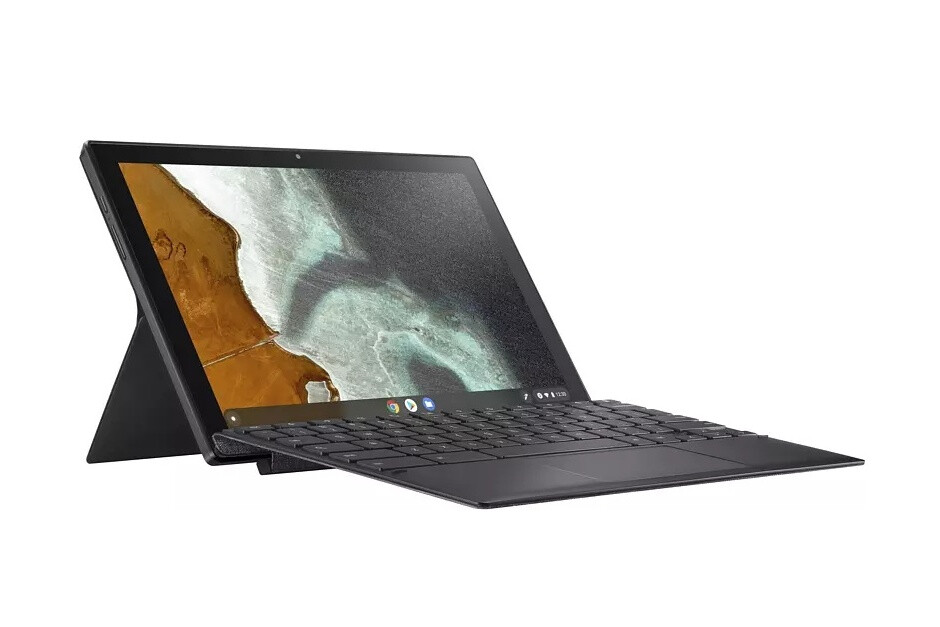We may earn a commission if you make a purchase from the links on this page.
2020 has been a surprisingly good year for the global PC industry as a whole and tablets in particular, with a comprehensive new report estimating shipments jumped 17 and 28 percent respectively compared to 2019.
The same market analysis, published by Canalys just last week, highlighted an even more impressive progress for Chromebooks around the world both in Q4 2020 and the entire year, with Lenovo coming in second place overall while dominating the segment as far as growth rates are concerned. One of the main contributors to the company’s incredible 1766 percent surge in holiday sales was unquestionably the ultra-affordable and very well-reviewed 10.1-inch Chromebook Duet.
A kickstand, a keyboard, and a built-in pen?!
Middling specs, unknown price
In case you’re wondering, the impending 2-in-1 Asus Chromebook doesn’t look significantly more impressive on paper from the information we have, sporting a larger 10.5-inch display with an identical resolution of 1920 x 1200 pixels and packing a newer but not necessarily faster MediaTek 8183 SoC with four Cortex-A73 and four A53 CPU cores clocked at up to 2.0GHz.
The storage and memory are also unchanged, at least in an entry-level configuration, at 4 and 64 gigs respectively, while the battery life is unlikely to exceed the solid 10 hours delivered by the Lenovo Chromebook Duet between charges. We can’t say we’re too impressed by the screen bezels or the overall look of the CM300 either… if the tablet is indeed set to cost $400 or $450.
Then again, there’s always a chance this placeholder will not prove accurate or reliable, in which case you may want to consider the headphone jack of the upcoming Asus machine as a key advantage over the existing Lenovo device. Finally, we should mention the unreleased slate is expected to be slightly heavier, taller, wider, and thicker than its direct rival, which can be partly “blamed” on that extra 0.4 inches of screen real estate.


